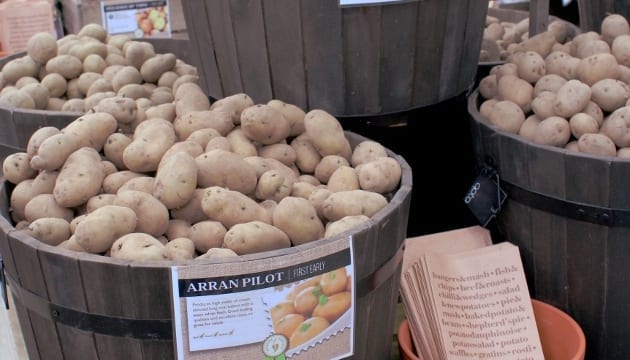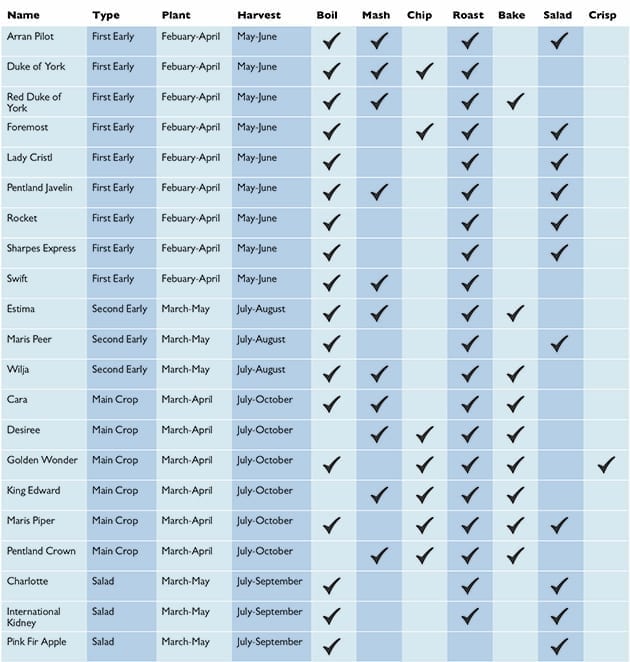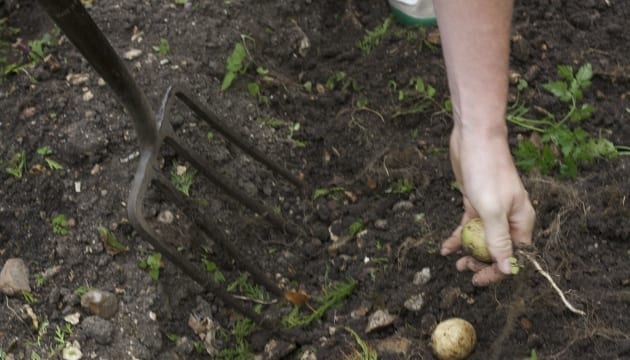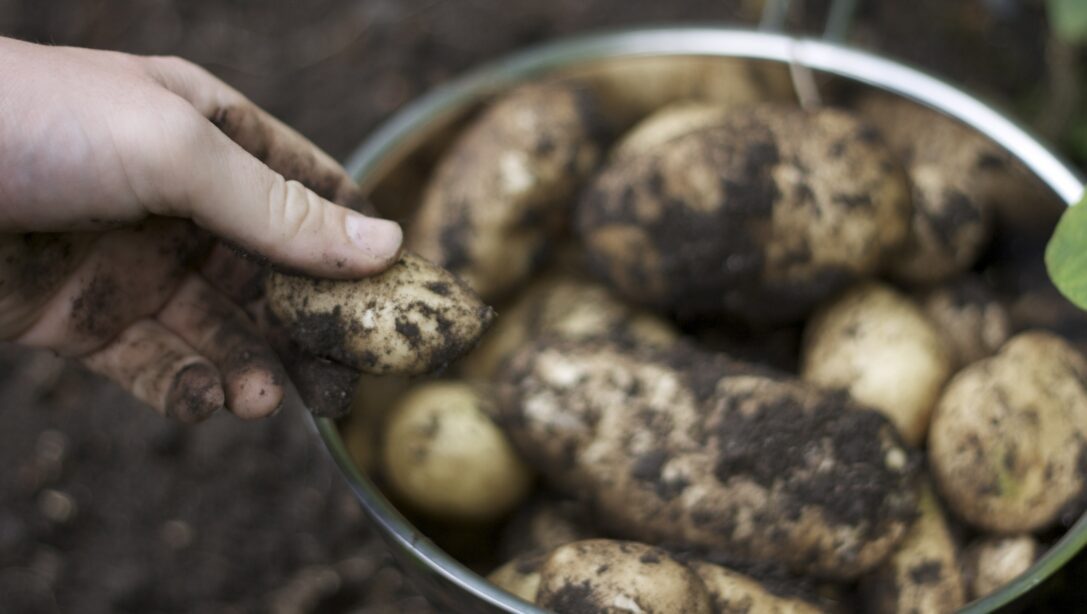What could be more satisfying than heading into your own garden, digging up some potatoes that you have lovingly grown and turning them into delicious, crispy roast potatoes for your Sunday meal? Or, cooking a steamy pile of chips? Growing your own potatoes is relatively easy.
Follow our step-by-step guide, which includes a guide to potato types and some inspiring recipe ideas for your precious spuds.
Step One: Choose Your Potatoes
 Different potatoes have different qualities, so think about how you want to use them. Some potatoes break into a fluffy texture, making them ideal for mashing, baking, wedges and chips (such as Maris Piper and King Edward). Others keep a waxy, firm texture and are better for soups, stews and salads (such as Desiree, Maris Peer or Charlotte for salads).
Different potatoes have different qualities, so think about how you want to use them. Some potatoes break into a fluffy texture, making them ideal for mashing, baking, wedges and chips (such as Maris Piper and King Edward). Others keep a waxy, firm texture and are better for soups, stews and salads (such as Desiree, Maris Peer or Charlotte for salads).
Different varieties have different planting and harvesting time, from First Earlies which – as the name suggests – are the first to mature through to Main Crop, which mature in late summer to autumn and can be stored to see you through winter.
Our table below highlights some key varieties, how you can use them and their planting and harvesting time.
Seed Potato Planting Guide 
Step Two: Chitting
Once you have your potatoes, first allow them to ‘chit’ – i.e. sprout – before you plant them. This helps them grow faster and stronger.
To ‘chit’ your potatoes, in February – March put them in a tray with shoots facing up (or eggboxes also work well). Place the tray somewhere light, protected from both extreme cold or heat. Leave for around 6 weeks, until the sprouts reach 1.5-2.5cm long.
Step Three: Plant (In The Ground or In a Grow Bag)
If planting in the ground. Choose a sunny spot and dig the soil thoroughly, turning it over. Dig a trench 15cm deep by 15cm wide. Place your seed potatoes in the trench, spaces 25-30cm apart, with the shoots facing up. Cover over with soil. If you are digging multiple trenches, make sure they are at least 60cm apart from each other.
If planting in a grow bag. Fill the bag with around 15cm of compost. Place three or four potatoes on top, with the shoots facing up. Cover with another 15cm of compost and water well.
Step Four: Soil and Water
Whether you are growing in the ground or in a bag, new growth should start to appear within a few weeks. Cover first shoots with a layer of soil (in the ground) or compost (in a bag) to protect from frost and keep well-watered.
In the ground, once the shoots reach 23cm (9 inches) tall, cover with soil, creating a ridge about 15cm (6 inches) high. This process is called ‘earthing up’. This ensure the developing potatoes aren’t exposed to light, which turns them green and poisonous.
In a bag, keep covering with a new layer of compost and watering until the shoots are 5cm from the top of the bag.
Continue to keep well-watered, especially in dry weather.
Step Five: Harvest
 Around 12 weeks after planting (or, up to 18 weeks for Main Crop varieties), your potatoes will come into flower signalling they are ready for harvesting. First earlies can be lifted and eaten immediately. Second Earlies and Main Crop varieties can be left in the ground for a little longer. With maincrops, you can leave until the foliage starts to yellow. You can then cut down and remove the foliage and wait 10 days before harvesting the potatoes.
Around 12 weeks after planting (or, up to 18 weeks for Main Crop varieties), your potatoes will come into flower signalling they are ready for harvesting. First earlies can be lifted and eaten immediately. Second Earlies and Main Crop varieties can be left in the ground for a little longer. With maincrops, you can leave until the foliage starts to yellow. You can then cut down and remove the foliage and wait 10 days before harvesting the potatoes.
Carefully dig from the ground, taking care to avoid bruising in the process. From a growing bag, remove the whole plant. Wash your potatoes and store in a cool, dark spot.
Step Six: Cook and Eat!
The hard work has been done, your potatoes are lifted, washed and ready. All that is left is to enjoy their delicious flavour.
Find a number of inspiring recipes featuring potatoes from our Hillier Development Chef:
>> Chickpea, Sweet Potato and Spinach Curry (replace sweet potato with regular potato)
>> Mackerel with Potato, Beetroot & Orange Salad





